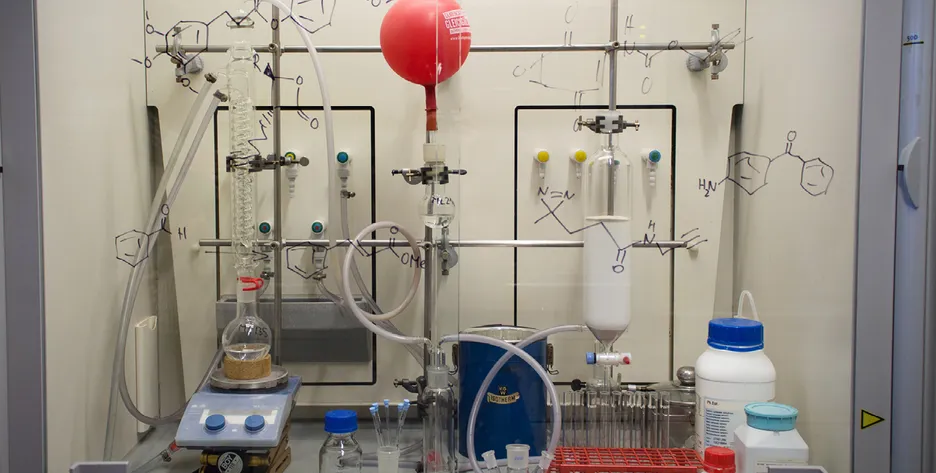Natural Product Mode of Action

The Challenge:
Natural products represent a rich source of potent biomolecules active against bacteria as well as cancer cells. In the course of evolution they have been optimized to address essential cellular functions and thus represent a major inspiration for exploiting new therapeutic approaches. Despite their powerful biological effects the underlying molecular modes of action for many of these compounds are still unexplored. However, knowledge of their cellular mechanisms is important to provide a rational for optimization and to identify novel drug targets, e.g. in the field of antibiotics where new and resistance-free pathways are desperately needed.
Our Goals:
We focus on previously reported natural product scaffolds with special emphasis on those that exhibit potent bioactivities but have been poorly characterized in terms of their cellular mechanisms. Chemical functionalization with reporter groups allows proteomic profiling to identify the corresponding targets. We seek to fully understand the binding of these molecules to the target proteins, their cellular function and potential therapeutic effects. On a longer run, we collect disease relevant proteins and exploit their chemical manipulation for therapeutic approaches.
Our Research:
We investigated several natural products and natural product-derived privileged scaffolds to unravel their targets in human and bacterial cells. In-depth studies with diverse chemical structures revealed binding to proteins essential for cellular function. Here, a large sub-fraction of natural products utilizes electrophilic groups that covalently attach to nucleophilic amino acid residues at catalytic sites of proteins. These irreversible traps not only reveal targets of importance for cellular function, but also provide mechanistic insights into residues with relevance for catalysis. In case of natural products with a reversible binding mode, we furthermore apply photocrosslinkers to trap the target protein upon irradiation with UV light. Several novel mode of actions could be identified, e.g. in case of neocarzilin, which selectively inhibits cell migration by targeting the protein VAT-1, and natural product-inspired beta-lactones, which infiltrate mycolic acid biosynthesis in Mycobacterium tuberculosis.
Selected Publications
| 1. | Gleissner, C. M. L., Pyka, C. L., Heydenreuter, W., Gronauer, T. F., Atzberger, C., Korotkov, V. S., Cheng, W., Hacker, S., Vollmar, A., Braig, S., Sieber, S.A. "Neocarzilin A is a potent inhibitor of cancer cell motility targeting VAT-1 controlled pathways." ACS Cent. Sci., 5, 1170-1178 (2019) | PMCID: PMC6661975 | doi: |
| 2. | Lehmann, J., Cheng, T. Y., Aggarwal, A., Park, A. S., Zeiler, E., Raju, R. M., Akopian, T., Kandror, O., Bach, N. C., Sacchettini, J. C., Moody, D. B., Rubin, E. J., Sieber, S. A. "An antibacterial β-lactone kills Mycobacterium tuberculosis by infiltrating mycolic acid biosynthesis." Angew. Chem. Int. Ed., 57, 348-353 (2018) | PMCID: PMC6104829 | doi: |
| 3. | Wright, M. H., Fetzer, C., Sieber, S. A. "Chemical probes unravel an antimicrobial defense response triggered by binding of the human opioid dynorphin to a bacterial sensor kinase" J. Am. Chem. Soc., 139, 6152-6159 (2017) | PMID: 28350441 | doi: |
| 4. | Zhao, W., Lorenz, N., Jung, K., Sieber, S. A. "Fimbrolide natural products disrupt bioluminescence of Vibrio by targeting autoinducer biosynthesis and luciferase activity" Angew. Chem. Int. Ed., 55, 1187-1191 (2016) | PMID: 26609793 | doi: |
